Practical Engagement Rings: A Comprehensive Guide
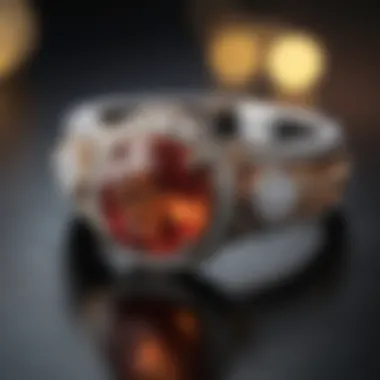
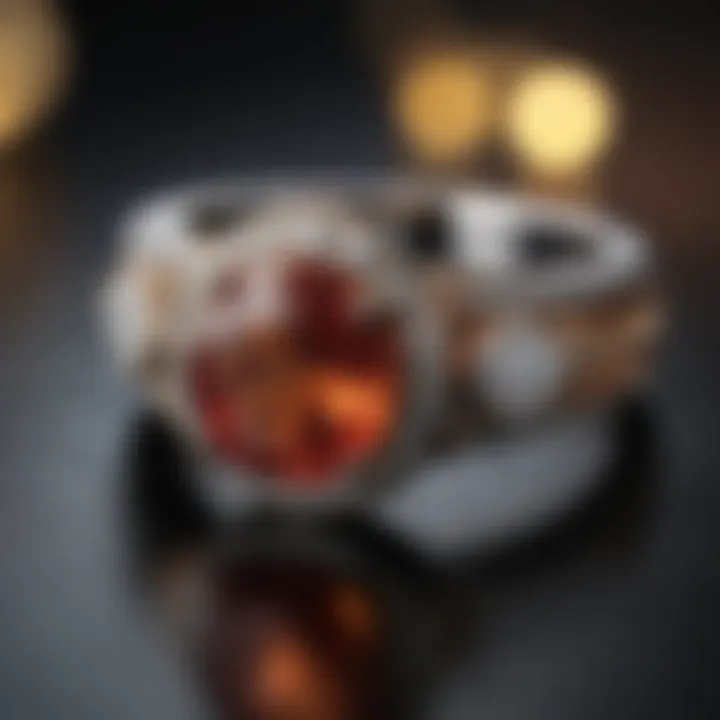
Intro
In the realm of engagement jewelry, practicality often takes a backseat to aesthetic appeal and romantic symbolism. However, practical engagement rings are emerging as a significant trend. This guide seeks to shed light on what makes these rings practical, the factors one should consider during selection, and how societal meanings intersect with personal choice. By exploring durability, design, and ethical sourcing, potential buyers can be better informed on the impactful journey of choosing an engagement ring.
Gemstone Overview
Definition and Characteristics
In the context of engagement rings, gemstones refer to precious or semi-precious stones crafted into jewelry. These stones differ in terms of hardness, color, clarity, and rarity. Notably, the Mohs scale of mineral hardness quantifies their durability. It is essential for an engagement ring to withstand everyday wear while still retaining its aesthetic properties.
Common gemstones such as diamonds, sapphires, and moissanite provide unique characteristics. For instance, diamonds boast exceptional hardness, rated at a 10 on the Mohs scale, whereas sapphires, characterized by their deep blue hue and exceptional brilliance, are rated at a 9.
Classification of Gemstones
Gemstones can be classified into two main categories: precious gemstones and semi-precious gemstones. Precious gemstones typically include diamonds, sapphires, rubies, and emeralds. The high demand and rarity contribute to their elevated status. Semi-precious stones like amethyst, garnet, and topaz, while equally beautiful, are generally more accessible.
Understanding the classification allows buyers to make informed choices, considering factors such as cost, availability, and suitability for daily wear.
"Choosing a gemstone based on personal preference rather than societal norms can lead to a more authentic engagement experience."
Historical Significance
Ancient Uses and Cultural Importance
Historically, gemstones have held a significant cultural and symbolic value across various civilizations. Ancient Egyptians believed that lapis lazuli carried protective properties, often adorning their jewelry. In contrast, Romans valued emeralds for their claimed ability to bring foresight.
Engagement rings, traditionally simple and understated, now reflect a tapestry of history and sentiment that extends beyond mere adornment.
Myths and Legends Surrounding Gemstones
Numerous myths surround gemstones, each adding layers to their allure. For example, during the medieval period, people believed that sapphires symbolized purity and wisdom, making them a popular choice for engagement jewelry. Diamonds, often seen as the stone of love, have been associated with strength and invincibility, further embedding them into the culture of romantic engagements.
Understanding these historical contexts can enhance the emotional depth behind the choice of a practical engagement ring, enriching the experience for the wearer and the giver alike.
Understanding Practical Engagement Rings
Understanding practical engagement rings goes beyond mere aesthetics; it encompasses the essence of making informed and meaningful choices. This section unpacks the critical aspects of selecting an engagement ring, emphasizing durability, design versatility, and budget considerations. An engagement ring is not just a symbol of love; it is also a tangible item that should withstand daily wear and represent the personality and lifestyle of the wearer. The importance of practicality lies in ensuring that the ring remains beautiful and functional over time, enhancing its emotional significance.
Defining Practicality in Engagement Rings
Practicality in engagement rings refers to traits that enhance their usability and longevity. A practical engagement ring should withstand daily activities while retaining its aesthetic appeal. Factors such as durability of the gemstone, type of metal used, and the choice of the setting are crucial. For example, a diamond is renowned for its hardness, making it an excellent choice for everyday wear. Materials like platinum offer remarkable strength and resistance to scratches, making them highly suitable for engagement rings.
When considering practicality, avoid overly elaborate designs that may hinder wearability. Simple band styles or those with lower profiles can provide a balance between style and function.
Cultural Significance of Engagement Rings
Engagement rings hold a deep cultural significance that varies widely across different societies. Traditionally, these rings symbolize a promise of commitment and love. In many cultures, they are seen as a reflection of not just the couple's attraction but also their future together. The type of gemstone and design can convey various messages about social status, personal values, and the couple's unique story.
In contemporary culture, the meaning of engagement rings is evolving. There is a growing appreciation for rings that reflect individuality and ethical considerations in sourcing. This trend emphasizes the importance of understanding the cultural backdrop of engagement rings, enabling couples to choose options that align with their values while also celebrating their love.
"The choice of an engagement ring can reflect personal values, aesthetics, and the cultural context of the couple's relationship."
Factors to Consider When Choosing a Practical Engagement Ring
Selecting an engagement ring is not merely a choice of aesthetics; it embodies significance and practicality. Engaged couples should consider numerous factors to ensure their selection meets both emotional and practical needs. An engagement ring often symbolizes commitment and love, thus, choosing the right ring holds essential value. This section delves into crucial elements such as durability, design versatility, and budget considerations that will fundamentally shape the decision-making process.
Durability and Wearability
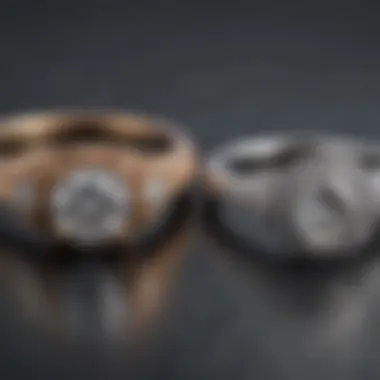
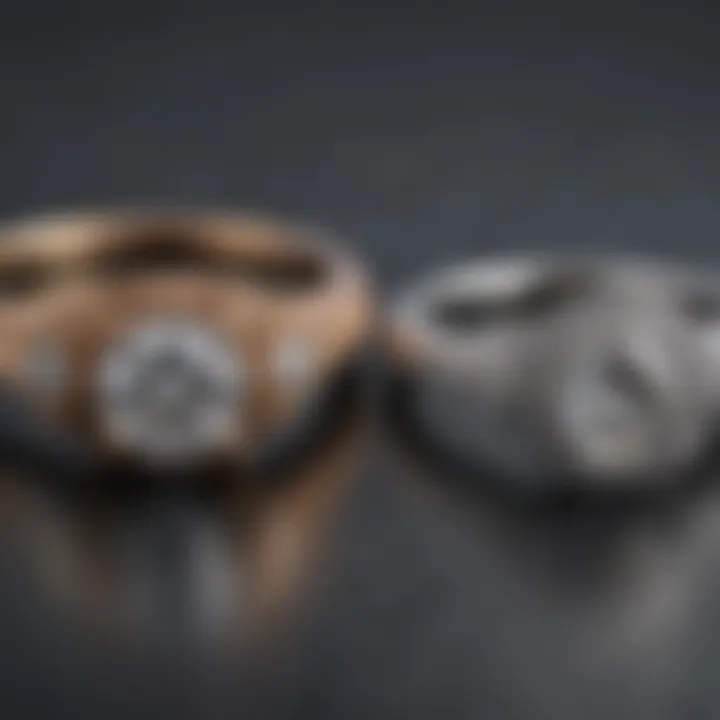
Durability is a primary concern for anyone purchasing an engagement ring. The ring is an item meant to be worn daily, often subjected to various activities that can affect its condition. Selecting a material and design with high durability is vital. Metals like platinum and gold are known for their strength and resistance to scratching. Furthermore, considering the hardness of the gemstone is equally important. Diamonds are exceptionally hard, making them less prone to scratching, whereas softer stones, such as opals, may require more care.
In addition to material, the design of the ring plays a crucial role in its wearability. A low-profile setting can help prevent snagging on clothing or other objects. It’s wise to think about the lifestyle of the wearer. If they are active in sports or outdoor activities, a more durable and secure setting will reduce the risk of damage.
Design Versatility
Design versatility ensures that an engagement ring can be appreciated across various settings and occasions. A practical engagement ring should blend seamlessly with both casual and formal attire. Simpler designs usually create more versatility, allowing the ring to complement different styles without being overpowering. For instance, a classic solitaire ring offers elegance while remaining adaptable to multiple outfits.
Moreover, consider the potential for future updates or modifications to the ring. Some designs lend themselves to the addition of bands or enhancers. This adaptability can extend the lifetime of the ring, allowing it to evolve with changing tastes or new significant events, such as anniversary celebrations.
Budget Considerations
Budget is relevant to every purchase, particularly for significant expenses like engagement rings. Understanding one’s financial limitations is crucial, as engagement rings come in a vast range of prices. Potential buyers should determine how much they feel comfortable spending without overextending themselves.
There are many strategies to optimize spending on an engagement ring. Exploring alternative gemstones, such as sapphires or lab-created diamonds, can provide stunning visuals without premium costs. Additionally, shopping during sales or at off-peak seasons may also yield more favorable prices.
It’s beneficial to communicate openly with one’s partner about financial constraints and preferences surrounding the ring. This ensures that both individuals have input into the purchase while aligning it with their personal values and financial realities.
Popular Gemstones for Practical Engagement Rings
Choosing the right gemstone is an essential part of the engagement ring journey. Popular gemstones can enhance both the beauty and practicality of a ring. Each stone carries unique attributes, influencing not just aesthetics but also durability and emotional significance. Thus, understanding these gemstones helps in making informed decisions based on individual preferences and lifestyles. Additionally, considering ethical aspects can align choices with values around sustainability and social responsibility.
Diamonds: The Traditional Choice
Diamonds hold a long-standing tradition in engagement rings. Their brilliance and durability make them an appealing option. A diamond is graded on the Four Cs: Cut, Color, Clarity, and Carat. The cut specifically impacts how a diamond reflects light, enhancing its sparkle.
However, buyers should consider the ethical implications of diamond sourcing. Conflict diamonds often come from regions where mining funds violence. Choosing conflict-free options can alleviate this concern. Moreover, lab-created diamonds offer a sustainable, ethical alternative while maintaining the beauty of natural stones. Therefore, diamond remains a popular choice, but awareness around its sourcing is crucial.
Sapphires: A Durable Alternative
Sapphires are increasingly favored in engagement rings. Known for their hardness, sapphires rank just behind diamonds on the Mohs scale of mineral hardness. This quality lends them great durability for daily wear.
Available in various colors, though most recognized in their classic blue form, sapphires offer versatility in design. They symbolize wisdom and royalty, adding emotional depth. An additional benefit is their generally lower cost compared to diamonds, thus making them an attractive option for those with budget considerations.
Moissanite: Gaining Popularity
Moissanite has emerged as a worthy contender in the engagement ring space. Its optical properties make it look nearly as brilliant as diamonds. Being significantly less expensive is a major advantage, appealing to those prioritizing both beauty and budget.
Moissanite's durability also matches that of diamonds, making it another suitable choice for individuals seeking practicality. Furthermore, its origin from natural sources or lab-created processes aligns well with modern ethical considerations, promoting a more sustainable approach to gemstone selection.
Unique Choices: Beyond Traditional Stones
While diamonds, sapphires, and moissanites are popular, many seek unique gemstones for engagement rings. Gemstones such as emeralds, rubies, and even alternatives like lab-created options offer distinct looks and meanings. For those who wish to stand apart from traditional norms, these stones can symbolize individuality and personal style.
- Emeralds: Representing rebirth and love, their vibrant green hue attracts attention.
- Rubies: Known for passion, they symbolize enduring love with their deep red tones.
- Alternative gemstones: Consider stones like tourmaline or aquamarine for personalized choices.
Choosing a unique gemstone can be an expression of personal connection. It emphasizes the significance of the relationship over traditional expectations, inviting creativity in the selection process.
In summary, understanding these popular gemstones offers valuable insights for buyers. Each option provides distinct benefits, costs, and meanings. By weighing these factors thoughtfully, individuals can find the perfect ring that balances practicality and personal significance.
Setting Styles That Enhance Practicality
When selecting a practical engagement ring, one cannot overlook the significance of the setting style. The setting style not only plays a critical role in the ring's aesthetic appeal but also in its functionality and durability. An engagement ring serves as a symbol of commitment; thus, it needs to withstand everyday wear while maintaining its beauty. Prong, bezel, and channel settings each offer unique benefits that cater to different lifestyles and preferences.
Prong Settings: Balance and Security
Prong settings are one of the most popular choices for engagement rings. Characterized by small metal claws, this style holds the gemstone securely while allowing maximum light to pass through. This enhances the stone's brilliance, making it appear more vivid and lively.
One of the key benefits of prong settings is their balance between visibility and security. The design highlights the center stone, and the minimal metal around it does not detract attention. However, it is essential to consider that prong settings require regular maintenance. The prongs can become loose over time, leading to potential loss of the stone.
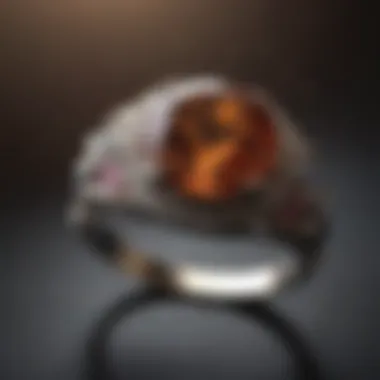
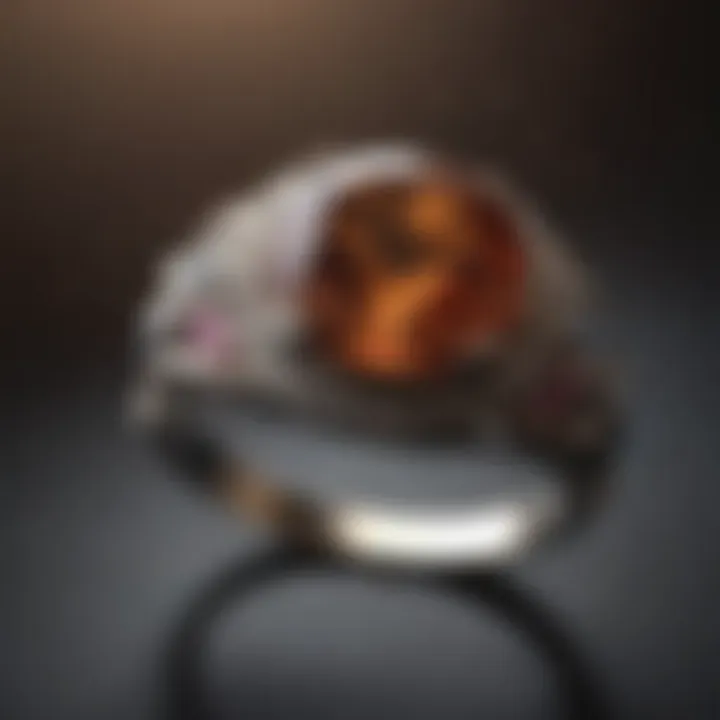
For those who are active, a well-crafted prong setting can provide the necessary security in daily life, as long as proper care is taken.
Bezel Settings: Full Protection
Bezel settings encircle the gemstone with a metal rim, offering a sleek and modern appearance. This design provides a high level of protection for the stone, making it an ideal choice for someone with an active lifestyle. Since the stone is fully surrounded, there is little risk of it becoming loose or falling out.
Moreover, bezel settings reduce the likelihood of damage to the gemstone. The setting's structure minimizes the chances of scratching or chipping, which is a distinct advantage over other styles. However, people may find that bezel settings can slightly limit the amount of light entering the stone, potentially dulling its brilliance. Nevertheless, many individuals appreciate the contemporary look and the robust protection it offers.
Channel Settings: A Streamlined Look
Channel settings consist of gemstones arranged closely together within a channel created by the ring's band. This style provides a streamlined appearance while also ensuring security. All stones are protected, reducing the risk of damage from daily wear. It is an excellent choice for individuals who prefer a more modern aesthetic with practicality.
Channel settings are particularly appealing for those who want a unique and continuous sparkle. However, it's crucial to recognize that cleaning these rings may require more effort, as dirt can accumulate in the channels. Regular maintenance is necessary to keep the stones looking fresh and vibrant.
Ethical Considerations in Gemstone Sourcing
In the realm of engagement rings, the ethical sourcing of gemstones has gained significant attention. Buyers increasingly prioritize the origins of the materials used in their jewelry. A strong ethical stance can influence purchasing decisions. Buyers want assurance that their rings do not contribute to environmental degradation or human suffering. This shift has spurred a broader interest in transparent supply chains and sustainable practices.
Understanding Conflict-Free Gems
Conflict-free gems refer to stones that are sourced in ways that do not support conflict or human rights abuses. The term became prominent with the narrative surrounding blood diamonds, which are mined in war zones and sold to finance armed conflict. Organizations like the Kimberley Process aim to regulate the diamond trade, helping to eliminate such practices. However, consumers still face challenges in verifying the claims presented by sellers.
Many jewelers now provide certifications, which assure buyers about the ethical origins of their gemstones. While these systems are improving, it is essential for consumers to do their own research and seek out reputable sources. The push for conflict-free gems not only aids ethical practices but also encourages greater accountability in the gemstone industry.
Sustainable Practices in the Industry
Sustainability in gemstone sourcing involves a comprehensive approach towards minimization of environmental impact. This includes methods that reduce waste and conserve natural resources. Practices such as responsible mining focus on minimizing damage to ecosystems while promoting fair labor practices for miners.
Key elements of sustainable practices in the industry include:
- Recycling and Upcycling: Some companies are now reusing materials from old jewelry to create new pieces. This process reduces the demand for newly mined gemstones, alleviating pressure on the environment.
- Lab-Created Stones: Technologies now allow for the creation of high-quality gemstones that match natural stones. These lab-created options often come with a smaller environmental footprint and ethical guarantees, appealing to many buyers looking for practical engagement rings.
"The renewed interest in ethical sourcing will likely drive the market towards greater transparency and innovation."
Emphasizing sustainability not only fosters a more ethical market but also sparks a shift in consumer awareness. As the jewelry industry evolves, embracing sustainable practices provides an avenue for creating rings that carry real meaning. This approach resonates with buyers who value both personal and planetary well-being, making it an essential consideration in the selection of practical engagement rings.
Alternative Materials for Engagement Rings
The choice of engagement ring materials extends beyond traditional options. As the jewelry industry evolves, the concept of practicality incorporates various facets. Alternative materials, such as lab-created diamonds or non-traditional gemstones, offer distinct advantages. They often align with modern values like sustainability and affordability. Understanding these materials is crucial for anyone considering a practical engagement ring.
Lab-Created Diamonds
Lab-created diamonds have gained traction in recent years as an attractive alternative to mined diamonds. These diamonds are chemically identical to their natural counterparts, offering the same brilliance and durability without the ethical concerns related to mining.
Benefits of choosing lab-created diamonds include:
- Cost-Effectiveness: They often cost 20-40% less than natural diamonds, allowing buyers to get a larger or higher-quality stone within their budget.
- Ethical Assurance: Lab-created diamonds are free from the conflict and exploitation issues associated with some natural diamonds.
- Customization Possibilities: These diamonds can be produced in various cuts, colors, and sizes, giving buyers more options.
While some may question the value of a lab-created diamond, it is essential to evaluate personal beliefs and preferences. For couples who value ethical considerations and cost, lab-created diamonds present a compelling choice.
Alternative Gemstones and Natural Materials
Exploring beyond diamonds leads to several unique options, like sapphires, emeralds, and even unconventional materials like wood or ceramics. These alternative gemstones have their own charm and characteristics.
Here are some noteworthy alternatives:
- Sapphires: Known for their durability, sapphires offer a beautiful range of colors. They are nearly as hard as diamonds, making them ideal for daily wear.
- Emeralds: While softer than diamonds and sapphires, they can provide a rich, vibrant look if properly cared for.
- Moissanite: Resembling a diamond, this stone provides high brilliance and fire, and it tends to be more affordable and eco-friendly.
In pursuing alternative gemstones, one must consider the hardness and care requirements. Unique materials like wood or ceramic can add a touch of personalization, though they may lack the durability expected from traditional choices.
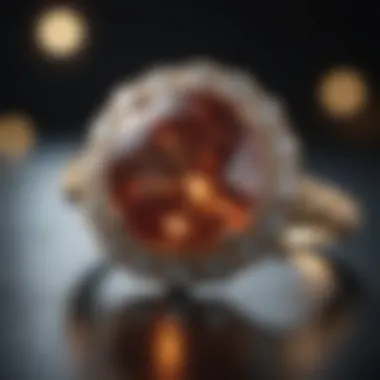

Selecting alternative materials for engagement rings opens a realm of creative expressions while also considering ethical and practical aspects of the purchase.
Market Trends Affecting Practical Engagement Rings
Understanding the market trends influencing practical engagement rings is crucial for buyers and designers alike. The choice of engagement rings has evolved significantly, reflecting societal changes, technological advances, and shifts in consumer preferences. By keeping abreast of these trends, individuals can make choices that resonate not only with personal tastes but also with current market dynamics.
One key benefit of recognizing market trends is the ability to align personal choices with broader movements. For instance, sustainable practices in gem sourcing are becoming increasingly relevant. Buyers are more inclined to select options that are environmentally friendly and ethically sourced. As awareness about environmental issues grows, so does the demand for transparency in the jewelry industry. It is essential to consider how current trends might influence not only aesthetics but also the cultural and ethical implications of choosing a specific ring.
Current Design Trends
In recent years, design trends in engagement rings have shifted towards more individualistic options. A notable trend is the rise of minimalism, which emphasizes simplicity and elegance. This trend appeals to those seeking practical engagement rings that can be worn daily without becoming overly ostentatious. Classic solitaire styles often fit within this category. Additionally, unique settings that enhance durability while maintaining aesthetics are gaining traction.
Furthermore, alternative materials, such as lab-created diamonds and other gemstones, are making waves in the market. This development is not only about affordability but also concerns sustainability and ethical considerations. With consumers becoming more informed, the notion of what constitutes a valuable engagement ring is broadening.
Impact of Social Media on Selection
Social media platforms have transformed how consumers select engagement rings. Visual platforms like Instagram and Pinterest allow potential buyers to explore countless designs, styles, and trends. The power of visual representation cannot be underestimated. Users can curate their ideals and get inspiration from influencers and peers.
Moreover, engaging content and user reviews on platforms such as Facebook and Reddit foster a sense of community, where individuals share personal stories about their choices. This creates a rich environment for learning from others’ experiences and preferences, ultimately influencing the decision-making process.
An important aspect to consider is the rise of hashtags related to engagement rings. These hashtags can lead to broader trends and allow consumers to discover new styles that may not have been on their radar previously. As a result, the collective consciousness around what constitutes a practical engagement ring is shaped more than ever by social media.
"The impact of social media on engagement ring selection reflects a shift towards community-driven inspiration, making it easier to embrace originality and practicality in choices."
Care and Maintenance for Practical Engagement Rings
Proper care and maintenance of practical engagement rings are crucial for ensuring their longevity and visual appeal. Regular upkeep protects the integrity of the materials and helps to maintain the ring’s original beauty, which is especially important given the emotional significance these rings carry. Additionally, understanding how to care for your ring reduces the risk of damage and promotes lasting enjoyment of this significant piece of jewelry.
Routine Cleaning Processes
Routine cleaning is a fundamental part of caring for an engagement ring. Dust, lotion, and other residues can accumulate, dulling the shine and sparkle of both the metal and the gemstones. Here are a few steps to follow for effective cleaning:
- Soak the Ring: Use a gentle solution of warm water and mild dish soap. Let the ring sit in the solution for about 20 to 30 minutes.
- Gentle Scrub: After soaking, use a soft toothbrush to gently scrub the ring, paying special attention to areas where dirt might accumulate, like under gemstones or around prongs.
- Rinse Thoroughly: Make sure to rinse the ring under warm water to remove any soap residue. It’s wise to do this in a bowl to prevent losing it down the drain.
- Drying: Pat the ring dry with a soft cloth, ensuring that water doesn’t get trapped under the stones.
Cleaning your engagement ring this way every few weeks can help maintain its luster and overall appearance. For different materials or stones, consider seeking professional cleaning to avoid possible damage.
Avoiding Common Damage
Understanding how to prevent common damages is as important as cleaning your ring. Here are several key considerations to keep in mind:
- Remove the Ring During Certain Activities: Avoid wearing your ring while engaging in harsh activities such as cleaning, exercising, or gardening. Chemicals and physical impacts can cause significant harm.
- Regular Inspections: Check your engagement ring frequently for loose stones or damaged settings. Addressing these issues early on can prevent more extensive repairs later.
- Store Properly: When not wearing, store your ring in a dedicated jewelry box lined with a soft fabric. This helps avoid scratches and keeps it protected from exposure to humidity, which can tarnish some metals.
- Be Mindful of Temperature Changes: Extreme temperature changes can affect gemstones, causing cracking or thermal shock. Ideally, avoid exposing your ring to conditions that are too hot or too cold.
By implementing these practices, you can protect your ring from wear and maintain its beauty for years to come.
Always remember that a little care goes a long way.
Links for Further Reading:
- Wikipedia on Engagement Rings
- Britannica on Jewelry Care
- Reddit Jewelry Community
- Facebook Jewelry Enthusiasts Group
The Psychological Aspect of Practical Engagement Rings
The significance of practical engagement rings extends beyond their physical attributes. When individuals choose an engagement ring, they often consider its psychological implications as much as its aesthetic appeal. This section elaborates on the essential components that contribute to the emotional and psychological relevance of these rings. The intersection of symbolism, emotional value, and the expression of personal preferences in relationships gives rise to a profound connection between the wearers and their chosen rings.
Symbolism and Emotional Value
Engagement rings have a rich symbolic significance. They represent a commitment and a promise between partners, encapsulating a shared journey that goes beyond mere decoration. Practically speaking, the selection of materials, durability, and design often reflects a couple's values and priorities. For instance, a buyer who opts for a lab-created diamond may be indicating a preference for sustainability and ethical considerations.
Moreover, the emotional value tied to a ring can foster a sense of belonging and security. The act of wearing a ring can remind the individual of their relationship every day. It serves as a tangible representation of love, commitment, and mutual respect. Choosing a practical engagement ring does not diminish these values; instead, it can enhance them by aligning with the lifestyle and preferences of the couple. This deeper understanding of symbolism helps couples connect in a meaningful way.
Communicating Preferences in Relationships
Effective communication within relationships often extends to the selection of an engagement ring. Partners should express their preferences, desires, and any concerns about practicality and symbolism. Engaging in this dialogue can prevent misunderstandings and ensure that the choice of the ring resonates with both individuals.
Discussing practical elements allows couples to navigate their differing viewpoints. For example, one partner may prioritize tradition, favoring a classic diamond ring, while the other might prefer a more modern, ethical alternative. By addressing these preferences openly, couples can arrive at a decision that honors both perspectives, leading to a ring that truly reflects their unique partnership.







